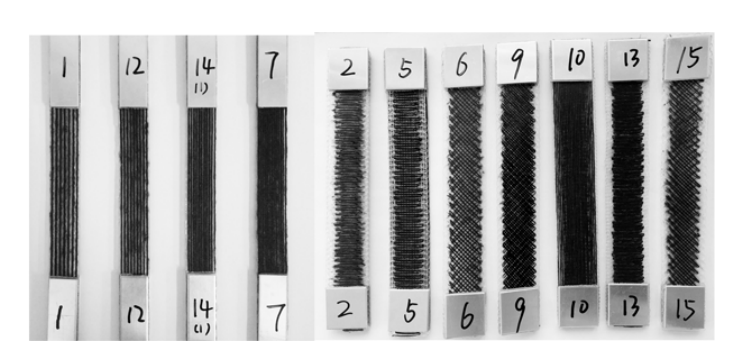Researchers have been looking further into the benefits of shape memory polymers (SMPs) with the addition of raw materials in the form of continuous carbon fiber (CCF). Authors Xinxin Shen, Baoxian Jia, Hanxing Zhao, Xing Yang, and Zhengxian Liu have studied mechanical properties in composite samples, along with performance—outlining details in the recently published ‘Study on 3D printing process of continuous carbon fiber reinforced shape memory polymer composites.’
SMPs are a ‘hotspot in academic research’ today as scientists embrace a growing fascination with materials that can deform and return to their natural state as required by users. Refining SMPs continues also, especially with materials like carbon fibers for overcoming challenges regarding strength and stiffness. While continuous fibers have been shown to be more effective than short fibers, the authors point out that forming processes are complex, and better ways are needed for creating continuous carbon fiber-reinforced composites. Here, they turn to FDM 3D printing as a solution:
“The composite 3D printer was mainly composed of motion platform, printing nozzle, fiber feeding mechanism and control system,” stated the researchers. “Compared with conventional printers, the nozzle of this printer can feed resin and fiber from two channels simultaneously and extrude them from the same nozzle.”
“In addition, the fiber feeding mechanism was designed to continuously feed the fiber at a suitable speed by adjusting the rotating speed of the stepping motor to avoid breakage of the fiber during printing.”
In using orthogonal experimental design, the authors studied influences such as:
- Printing temperature
- Printing speed
- Scanning pitch
- Ply angle
In examining issues with mechanical properties further, the researchers found that the ply angle of carbon factors was a key factor. As they varied ply angles, changes in tensile strength and modulus of the specimens resulted, showing tension along the fibers at 0 degrees, but at 90 degrees it was perpendicular, opening the potential for problems with adhesion.
The study also showed that mechanical properties were more suitable at about 200℃, with excessive printing speed affecting ‘impregnation’ of fibers and resin. The authors also noted little effect on SMPs due to changes in fiber content.
“The rapid manufacture of shape memory carbon fiber composites has potential use in the field of aerospace,” concluded the researchers.
While researchers, engineers, designers, and users around the world still may have yet to scratch the surface of the potential of 3D printing, many are delving further into the next level with materials that are able to morph to their environments, from soft actuators to 4D printing with wood composites, to exceptional new metamaterials.
Find out more about carbon fiber and SMPs here. What do you think of this news? Let us know your thoughts! Join the discussion of this and other 3D printing topics at 3DPrintBoard.com.
[Source / Image: ‘Study on 3D printing process of continuous carbon fiber reinforced shape memory polymer composites’]
Subscribe to Our Email Newsletter
Stay up-to-date on all the latest news from the 3D printing industry and receive information and offers from third party vendors.
You May Also Like
New Report: Semiconductor Industry to See $1.4B in 3D Printing Revenues by 2032
“The semiconductor sector has become the most strategically significant area of global industry.” Truer words are hard to come by when it comes to the modern world, and they are...
Will Photonic-Crystal Lasers Revolutionize 3D Printing?
Powder bed fusion (PBF) for metals and polymers predominantly utilizes lasers as the primary heat source. Some directed energy deposition (DED) technologies also employ lasers, while various vat polymerization methods...
3D Printing Unpeeled: Orbex Investment, IndoMIM and HP, Ultrasonic Waves
INDO-MIM has bought three HP Metal Jet S100 printers, operating two in India and one in Texas. This is a win for HP because the company has deep experience in...
3D Printing Webinar and Event Roundup: April 21, 2024
It’s another busy week of webinars and events, starting with Hannover Messe in Germany and continuing with Metalcasting Congress, Chinaplas, TechBlick’s Innovation Festival, and more. Stratasys continues its advanced training...




































